Persil Eye Drop

₹67.5*
MRP ₹75
10% off
₹63.75*
MRP ₹75
15% CB
₹11.25 cashback(15%)
Free Delivery
With Circle membership
(Inclusive of all Taxes)
This offer price is valid on orders above ₹800. Apply coupon PHARMA10/PHARMA18 (excluding restricted items)
Persil Eye Drop is an anti-allergic medicine used to treat allergic eye conditions. It contains Naphazoline, Methylcellulose, Boric acid, Zinc sulphate, and Chlorpheniramine maleate. Naphazoline constricts the blood vessels in the eyes to reduce itching and redness, while Methylcellulose provides lubrication, relieving dryness and discomfort. Boric acid helps cleanse the eyes of pollutants, Zinc sulfate alleviates redness and irritation, and Chlorpheniramine maleate eases itching and watering in the eyes. Together, these ingredients relieve symptoms such as redness, itching, irritation, burning, and discomfort caused by eye allergies or exposure to environmental factors like wind, sun, or dust. Persil Eye Drop may cause side effects, such as a mild burning or stinging sensation in the eyes, blurred vision, and dilated pupils. Before using this medicine, inform your doctor if you are allergic to any of its ingredients, are taking any other medications, or have pre-existing medical conditions.
Know Your Delivery Time
Provide Delivery Location
Available Offers
 Prescription drug
Prescription drugWhats That

Secure Payment

India's Most Trusted Pharmacy

Genuine Products
Manufacturer/Marketer :
Consume Type :
Return Policy :
About Persil Eye Drop
Persil Eye Drop is used to treat allergic eye conditions. It helps relieve symptoms such as redness, itching, burning, and discomfort caused by eye allergies or exposure to environmental factors like wind, sun, or dust. Eye allergies occur when the immune system reacts to an irritating substance, known as an allergen, that comes into contact with the eyes. In the case of eye allergies, this reaction results in redness, swelling, inflammation, and pain in the eyes.
Persil Eye Drop contains Naphazoline, Methylcellulose, Boric acid, Zinc sulfate, and Chlorpheniramine maleate. Naphazoline is a decongestant that narrows the enlarged blood vessels in the eyes, relieving itching and redness caused by eye irritation, colds, or allergies. Methylcellulose acts as a lubricant for the eyes, reducing dryness and discomfort. Boric acid (an antiseptic) is used as an eye wash to clean and soothe the eyes. It helps relieve irritation and removes pollutants like smog, chlorine, or chemicals. Zinc sulfate is an astringent (a substance that contracts body tissues) that helps reduce eye redness and irritation. Chlorpheniramine maleate is an antihistamine (antiallergic) that reduces itching and watery eyes caused by allergies. Together, these ingredients effectively relieve symptoms associated with eye allergies.
Persil Eye Drop is for ophthalmic (eye) use only. Sometimes, you may experience common side effects such as a mild burning or stinging sensation in the eyes, blurred vision, and dilated pupils. These side effects do not require medical attention and generally resolve over time. However, you are advised to consult your doctor if these side effects persist or worsen.
Before using Persil Eye Drop, inform your doctor if you are allergic to any of its ingredients and about all the prescription and non-prescription medications you are taking, especially eye medications and products. Avoid touching the tip of the dropper with bare hands or bringing it closer to the eyelids while using Persil Eye Drop, as this may contaminate the tip and the medicine. Avoid driving or operating machinery until your vision is clear, as the administration of Persil Eye Drop may cause temporary blurred vision. If you are pregnant or breastfeeding, it is advised to inform your doctor before using Persil Eye Drop. Persil Eye Drop should be used in children only if prescribed by a doctor.
Uses of Persil Eye Drop
Directions for Use
Tilt your head back and gently pull your lower eyelid downward and outward. Gently squeeze the dropper to release the eye drops into your eyes. Blink several times to help spread the medication.
Medicinal Benefits
Persil Eye Drop is primarily used to treat allergic eye conditions. It contains Naphazoline (a decongestant), Methylcellulose (a lubricant), Boric acid (an antiseptic), Zinc sulfate (an astringent), and Chlorpheniramine maleate (an antihistamine). Naphazoline constricts the blood vessels in the eyes to reduce itching and redness, while Methylcellulose provides lubrication, relieving dryness and discomfort. Boric acid helps cleanse the eyes of pollutants, Zinc sulfate alleviates redness and irritation, and Chlorpheniramine maleate eases itching and watering in the eyes. Together, these ingredients effectively relieve symptoms such as redness, itching, irritation, burning, and discomfort caused by eye allergies or exposure to environmental factors like wind, sun, or dust.
How Persil Eye Drop Works
Storage
Side Effects of Persil Eye Drop
- Burning or stinging sensation in the eyes
- Blurred vision
- Dilated pupils
What if I have taken an overdose of Persil Eye Drop
Drug Warnings
Before using Persil Eye Drop, inform your doctor if you are allergic to any of its ingredients and about all the prescription and non-prescription medications you are taking, especially eye medications and products. If you are using two eye medications, wait at least 5 minutes before using the second medication. Do not use Persil Eye Drop in doses larger than prescribed or for a prolonged period, as this may worsen your symptoms or damage blood vessels in the eye. Wash your hands thoroughly before using Persil Eye Drop to avoid any infection. Avoid touching the tip of the dropper with bare hands or bringing it closer to the eyelids while using Persil Eye Drop, as this may contaminate the tip and the medicine. You are recommended to remove your contact lenses before using Persil Eye Drop, as it contains a preservative that may cause discolouration of the lenses. However, you can reinsert them 15 minutes after using Persil Eye Drop. If you experience vision changes or eye pain, or if eye redness or irritation persists, worsens, or lasts longer than 72 hours, discontinue Persil Eye Drop and consult your doctor. Avoid driving or operating machinery until your vision is clear, as the administration of Persil Eye Drop may cause temporary blurred vision. If you are pregnant or breastfeeding, it is advised to inform your doctor before using Persil Eye Drop. Inform your doctor about your medical history, especially if you have hypertension (high blood pressure), glaucoma (high pressure in the eye), diabetes (high blood sugar), eye injury or infection, and hyperthyroidism (overactive thyroid), before using Persil Eye Drop.
Diet & Lifestyle Advise
- Wash your hands frequently and avoid touching or rubbing your eyes with unclean hands.
- Always use clean towels or tissues to wipe your face and eyes.
- Maintain good hygiene to keep your eyes clean and free from irritation.
- Wash and change your pillowcases regularly.
- If you use contact lenses, clean and replace them more frequently. Never share them, and always wash your hands before inserting or removing them.
- Take breaks from looking at digital screens by resting your eyes every 20 minutes.
Habit Forming
Therapeutic Class
Alcohol
Consult your doctor
There is limited information on how alcohol consumption affects Persil Eye Drop. Please consult your doctor if you have concerns.
Pregnancy
Consult your doctor
Please consult your doctor if you are pregnant or planning to become pregnant before using Persil Eye Drop. Your doctor will weigh the benefits and potential risks before prescribing it.
Breast Feeding
Consult your doctor
There is limited information on whether Persil Eye Drop passes into breast milk. Please consult your doctor before using Persil Eye Drop if you are breastfeeding.
Driving
Caution
Persil Eye Drop may cause blurred vision after use, which can affect your ability to drive. Do not drive or operate machinery in such cases. Drive only when you have a clear vision.
Liver
Consult your doctor
Let your doctor know if you have any history of liver diseases. Your doctor will weigh the benefits and potential risks before prescribing Persil Eye Drop.
Kidney
Consult your doctor
Let your doctor know if you have any history of kidney diseases. Your doctor will weigh the benefits and potential risks before prescribing Persil Eye Drop.
Children
Consult your doctor
If you have any concerns regarding the use of Persil Eye Drop for children, please consult a doctor.
FAQs
Persil Eye Drop is used to treat allergic eye conditions. It helps relieve symptoms such as redness, itching, burning, and discomfort caused by eye allergies or exposure to environmental factors like wind, sun, or dust.
Persil Eye Drop contains Naphazoline, Methylcellulose, Boric acid, Zinc sulfate, and Chlorpheniramine maleate. Naphazoline is a decongestant that narrows the enlarged blood vessels in the eyes, relieving itching and redness caused by eye irritation, colds, or allergies. Methylcellulose acts as a lubricant for the eyes, relieving dryness and discomfort. Boric acid (an antiseptic) is used as an eye wash to clean and soothe the eyes. It helps relieve irritation and removes pollutants like smog, chlorine, or chemicals. Zinc sulfate is an astringent (a substance that contracts body tissues) that helps reduce redness and irritation in the eyes. Chlorpheniramine maleate is an antihistamine (antiallergic) that reduces itching and watery eyes caused by allergies. Together, these ingredients effectively relieve symptoms associated with eye allergies.
Persil Eye Drop may cause common side effects such as a mild burning or stinging sensation in the eyes, blurred vision, and dilated pupils. These side effects do not require medical attention and generally resolve over time. However, you are advised to consult your doctor if these side effects persist or worsen.
You are advised to remove your contact lenses if you are wearing them while administering Persil Eye Drop, as it contains a preservative that may cause discoloration of the lenses. However, you can reinsert them 15 minutes after using Persil Eye Drop. Also, remember to wash your hands before administering the medicine to avoid infection. Avoid touching the tip of the dropper with your bare hands or bringing it too close to the eyelids while using Persil Eye Drop, as this may contaminate the tip and the medicine. Do not use Persil Eye Drop in doses larger than prescribed or for a prolonged period, as this may worsen your symptoms or damage the blood vessels in the eye.
If you are using other eye medications along with Persil Eye Drop, it is advised to wait at least 5 minutes between each administration to avoid potential interactions. This allows the medications to be properly absorbed. Additionally, always use eye drops before applying any eye ointment.
For effective results, you are recommended to use Persil Eye Drop for as long as your doctor prescribes it. If your symptoms continue or worsen, please consult your doctor.
Country of origin
Manufacturer/Marketer address
Disclaimer
Reference
- https://www.webmd.com/drugs/2/drug-5611/naphazoline-ophthalmic-eye/details
- https://www.mayoclinic.org/drugs-supplements/naphazoline-ophthalmic-route/description/drg-20067811#drug-side-effects
- https://www.drugs.com/mtm/naphazoline-ophthalmic.html#side-effects
- https://www.webmd.com/drugs/2/drug-18692/methylcellulose-ophthalmic-eye/details
- https://www.drugs.com/mtm/boric-acid-ophthalmic.html#overdose
- https://www.webmd.com/drugs/2/drug-149691/naphazoline-zinc-sulfate-glycerin-ophthalmic-eye/details
- https://www.webmd.com/eye-health/ss/slideshow-eye-allergies
- https://www.mayoclinic.org/diseases-conditions/pink-eye/symptoms-causes/syc-20376355







